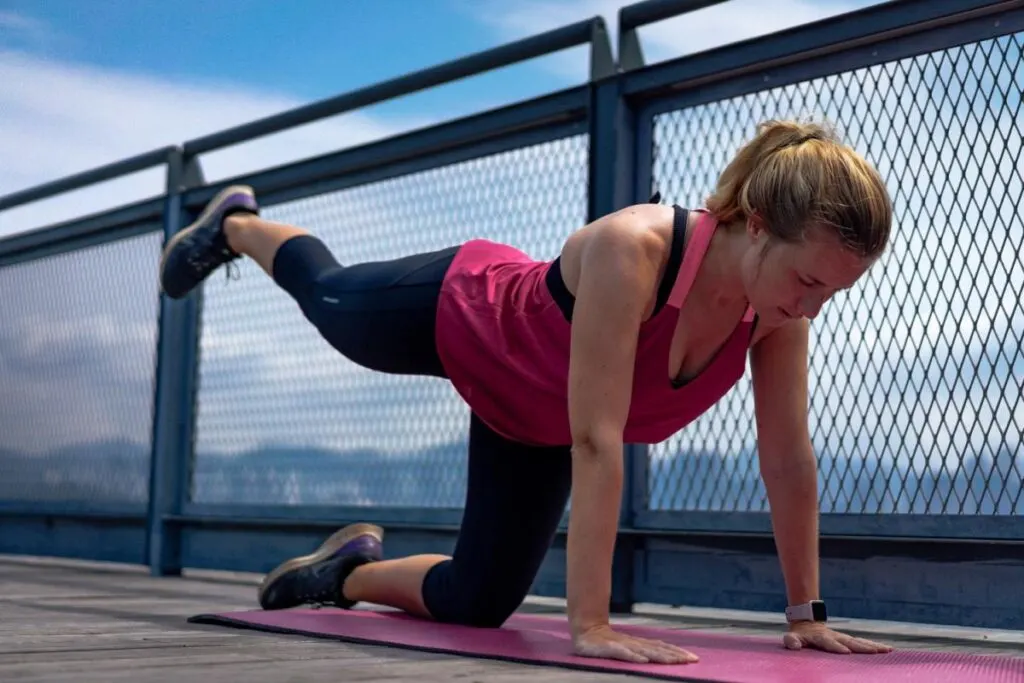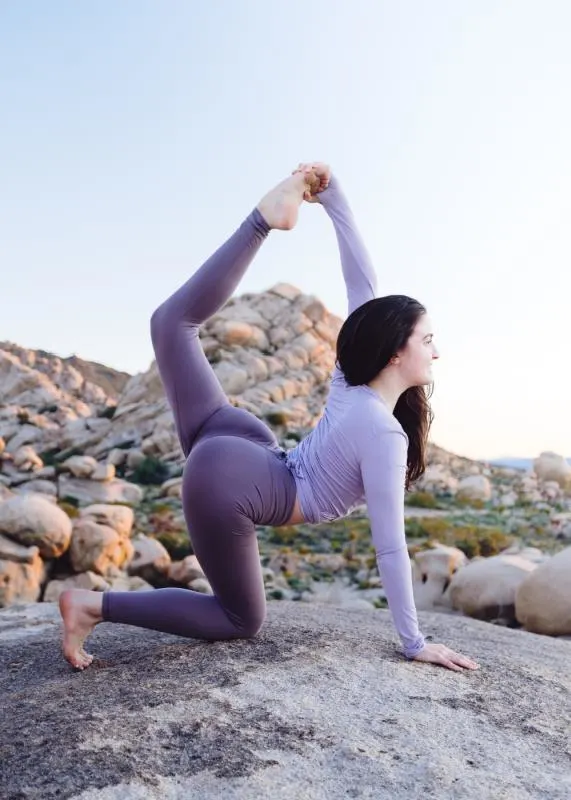Active people and athletes rely on different types of stretching to improve flexibility and mobility.
These include flexing or extending a tendon or muscle to enhance elasticity.
A popular type of stretching is the active one, where people use their own muscles for resistance to create and maintain a stretch.
In this article, you’ll find details about how the active form differs from others, how to do it, and, most importantly, why.

What is it?
Active stretching is a method to improve elasticity and flexibility.
Two muscles are at play here: the so-called agonist and the antagonist. The agonist is contracted to stretch its counterparty without exerting force from the outside.
You just hold the stretch with your muscles instead of an aid like a band or strap.
This is why this form of stretching is called “active.” Usually, stretches are held for about 12 seconds on average.
Examples
One of the most common types of an active stretch is stretching your hamstring.
You lie in a supine position and lift your leg up without bending it. Your hip flexors and core have to work actively to hold your leg in this position without a strap.
Your hamstrings are stretching statically. These muscles are on the hip joint’s opposite side.
People usually do this type of stretching after working out. Research indicates that doing it before exercise can reduce muscle capacity and strength.
Those who practice yoga are very familiar with these exercises.
Many yoga positions call for strength in given muscles while stretching their antagonists.
Benefits
Tightness in your muscles after doing some form of exercise is a good sign.
However, those who’d like their performance to improve must learn to release this tightness the right way.
Active stretches help you do this and let you keep improving with each workout.
Personalization
Passive stretching routines also help make people more flexible, but they don’t address their unique needs.
Their active counterparts are more personalized.
They allow people to target painful muscles or the ones that are most active in practicing their sport of choice. A professional can help you work on the right muscles when in doubt.
Improved Circulation
Active routines provide gentle stimulation, improving blood flow to muscles.
This means they get more oxygen, which helps improve their health in general and makes it possible for them to perform better.
Everyone knows healthy muscles contribute to better performance and an improved overall health condition.

Relieve Pain
Regular active routines can help relieve pain.
You’ll notice this benefit almost immediately. It comes from minimizing tension and improving circulation in your muscles.
People doing active stretches to recover from an injury will appreciate this benefit more than anyone else.
Better Athletic Performance
One of the biggest and most important benefits involves performing better in your sport of choice.
This form of stretching helps improve muscle performance in the areas required.
How to do It
You can do it practically everywhere because it doesn’t require any special equipment.
First, you need to know which muscle or muscles you want to work on and choose the corresponding pose. Then, flex the muscle on the opposite side of the one you’re targeting.
Hold the pose until you feel the muscle stretch. You should start to in about 10 seconds.
This is a great routine to perform independently or after a workout.
If you’ve had surgery and/or an injury, it’s best to work with a physical therapist before you implement such a routine.
Differences Between Types of Stretching
Different methods of stretching tend to have similar functions. Their performance is where variation comes in.
Apart from active, there’s dynamic, passive, and ballistic stretching.
Passive
Passive stretching focuses on the use of an outside force to perform the stretch.
This can be a partner, another body part, or an object. You must hold the pose for a certain time, like with active stretches.
People usually perform a passive stretching routine to relax after a workout.
This helps facilitate the recovery of not only your muscles but also your connective tissue.
Dynamic
This method of stretching is based on movement. You move a certain muscle through its full range of motion. Controlled movement is key here.

You should never move beyond the respective motion range. Usually, dynamic stretching is done before working out or training. It’s specific to certain sports.
Typical examples of it include shoulder circles and leg swings.
Ballistic
Last but not least, ballistic stretching starts with moving a certain muscle through its full motion range, like dynamic stretching.
Then, you try to go beyond the range. These exercises are risky because they can require uncontrolled movements.